

How does science work? Scientific knowledge is an aggregate of research-based evidence; it is not based on any single source of information.

Although different scientific disciplines may have different ways of gathering knowledge, in general, the scientific method comprises observation, experimentation, and then analysis of experimental data. This may be followed by reformulating the original hypothesis or idea and sometimes synthesis to formulate natural laws. When research papers are published, they are first scrutinised by peers in the discipline. After they are published, they are scrutinised by the broader scientific community and other researchers will try to reproduce, analyse and challenge what is presented. This is an ongoing process and ensures rigour and integrity of the scientific process. What does a scientist in the space sector do? - Canadian Space Agency.
NASA – Why We Explore. Human Space Exploration Humanity's interest in the heavens has been universal and enduring.
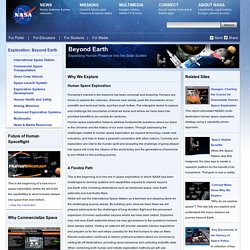
Humans are driven to explore the unknown, discover new worlds, push the boundaries of our scientific and technical limits, and then push further. The intangible desire to explore and challenge the boundaries of what we know and where we have been has provided benefits to our society for centuries. Human space exploration helps to address fundamental questions about our place in the Universe and the history of our solar system. Through addressing the challenges related to human space exploration we expand technology, create new industries, and help to foster a peaceful connection with other nations.
Five things we know about the universe that will make you feel very small. One thing we know about the universe is that it's really big.
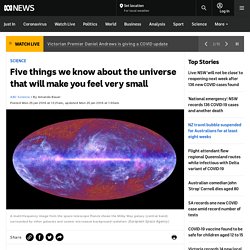
Another is that thinking about it and trying to understand it will make your brain hurt. Astronomer Amanda Bauer takes us through her top five mind-expanding things we know (or don't know) about the universe. 1. There is no edge of the universe. How we study space. Curious - Science for curious minds. Australian disasters. What is a bushfire? What is a bushfire?

Bushfires are fires that burn through areas of bushland. They are a type of wildfire – fires that burn through wild vegetation like woodland, scrubland, grassland or savannahs. These fires are unpredictable and difficult to control. Australian Bushfires. Australia fires: A visual guide to the bushfire crisis. How the size of the Australian bushfires compare to California. ‘Black Saturday’ bushfires - National Museum of Australia. Days before Black Saturday A heatwave struck south-eastern Australia in the weeks before 7 February 2009, building on two months of hot, dry conditions.
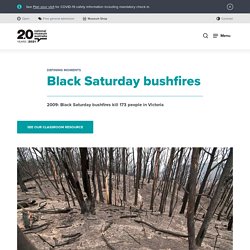
Melbourne endured three days above 43 degrees and the temperature peaked on 30 January at 45.1 degrees, one of the hottest days ever recorded in the city. These temperatures combined with extremely low levels of humidity to create tinder-dry conditions in the Victorian bush. On 6 February Premier John Brumby issued a public warning that the next day was expected to be the ‘worst day [for fire conditions] in the history of the state’. Canberra bushfires - National Museum of Australia. NSW RFS - NSW Rural Fire Service. Beyond the Bushfires - Education and Teaching Resources - Cool Australia. Education resources investigating Australian wildlife’s recovery after the bushfires of 2019/20 The Beyond the Bushfires education series brings the words of scientists who are actively involved in research and science communication into schools and classrooms all over Australia.
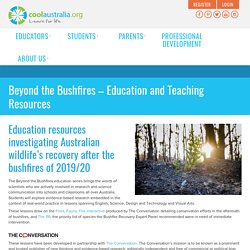
Students will explore evidence-based research embedded in the context of real-world practice in lessons spanning English, Science, Design and Technology and Visual Arts. Forces for Kids. Forces can make things change shape.
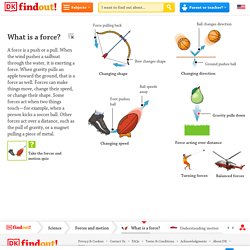
Some objects stretch and bend when a force is applied. Pulling on the bowstring applies a force. Force - Britannica Kids. There are two types of forces: contact forces and field forces.
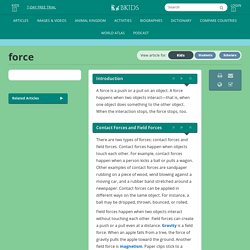
Contact forces happen when objects touch each other. For example, contact forces happen when a person kicks a ball or pulls a wagon. Fundamental forces of nature - How stuff works. The first force that you ever became aware of was probably gravity.
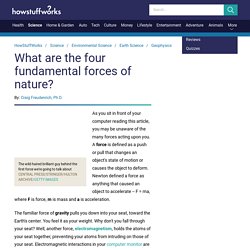
As a toddler, you had to learn to rise up against it and walk. When you stumbled, you immediately felt gravity bring you back down to the floor. Besides giving toddlers trouble, gravity holds the moon, planets, sun, stars and galaxies together in the universe in their respective orbits. It can work over immense distances and has an infinite range. Defining Gravity: Crash Course Kids #4.1. Down to Earth: Crash Course Kids #4.2. The Great Escape: Crash Course Kids #13.1. Science Max: Attraction and forces. The way things work: principle of science - David Macaulay and DK Multimedia.
Space Compilation: Crash Course Kids. 65,000 yrs: the great history of Australian Aboriginal Astronomy - TEDx talks. Home – Australian Indigenous Astronomy. First Peoples of Australia Astronomy - Scienceworks. There is no single First Peoples astronomy.
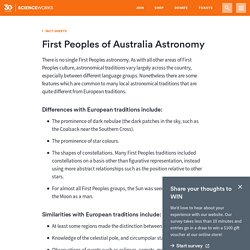
As with all other areas of First Peoples culture, astronomical traditions vary largely across the country, especially between different language groups. Nonetheless there are some features which are common to many local astronomical traditions that are quite different from European traditions. Differences with European traditions include: Star Maps – Australian Indigenous Astronomy. Star Maps Robert Fuller, an MPhil student at Macquarie University) was researching the astronomical knowledge of the Euahlayi and Kamilaroi Aboriginal peoples of northwest New South Wales in 2013 when he became aware of “star maps” as a means of teaching navigation outside of one’s own local country.
His teacher of this knowledge was Ghillar Michael Anderson, a Euahlayi Culture Man from Goodooga, near the Queensland border. This is where the western plains and the star-filled night sky meet in a seamless and profound display. How ancient Aboriginal star maps have shaped Australia’s highway network - SBS. The next time you’re driving down a country road in outback Australia, consider there’s a good chance that very route was originally mapped out by Aboriginal people perhaps thousands of years before Europeans came to Australia.
And like today, they turned to the skies to aid their navigation. Except instead of using a GPS network, they used the stars above to help guide their travels. Understanding Songlines: A 360 experience with Rhoda Roberts AO. Songlines. Songlines have been a central feature of First Nations cultures for over 60,000 years. Songlines carry laws and stories that First Nations people live by. Because Songlines are so interwoven with First Nations cultures, it is difficult to translate what they are for non-Indigenous people. For an Elder in Central Australia for example, Songlines are part of life and second nature. Arrernte Tribal Group - Aboriginal Australian Art & Culture Alice Springs. The Eastern and Central Arrernte people live in Central Australia, their traditional land including the area of Alice Springs and East MacDonnell Ranges.
They are also referred to as Aranda, Arrarnta, Arunta, and other similar spellings. Their neighbours are the Southern Arrernte, Luritja, Anmatyerr, Alyawarr and Western Arrernte peoples. There are five dialects of the Arrernte language: South-eastern, Central, Northern, Eastern and North-eastern. Arrernte country is rich with mountain ranges, waterholes, and gorges; as a result the Arrernte people set aside 'conservation areas' in which various species are protected. People - Alice Springs Desert Park.
Werte! Anwerne akangkeme anthurre arrantherre apetyeme Mparntwe Desert Park-werne. Apmere nhenhe Arrernte angkentye mape-kenhe.